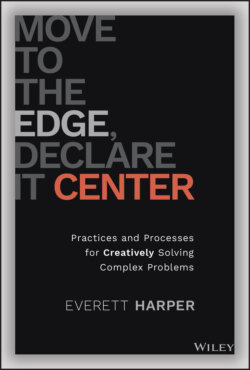Читать книгу Move to the Edge, Declare it Center - Everett Harper - Страница 18
Our Bodies: Reacting to Stress
ОглавлениеThe COVID pandemic provided a vivid lens to observe common patterns of stress reactions that often lead to poor decision making. I'm sure we have all felt many, if not all of the following list.
We freeze, delaying decisions out of fear of doing the wrong thing.
We go into flight, failing to confront reality, ignoring, minimizing, failing to gather facts that might challenge our belief about the crisis.
We go into fight mode, defending or blaming without thinking, often doing more collateral damage.
We go into friend/fawn mode, soothing our uncertainty by taking actions to make sure we are liked and appreciated by others, instead of making decisions that we fear will make us unpopular – even if it's the right call.
We return to the familiar – the old decision‐making models, playbooks, intuitions, or people, ignoring or failing to see that the context has changed and new rules apply.
During my research for this book, I learned about another perspective to these stress patterns, emerging from the work of Shelley Taylor. She noted that the original research of fight‐or‐flight by Walter Cannon was tested only on men and male animals.25 Taylor's own experience suggested that women reacted to stress differently, so she replicated the research on female animals and women, and observed distinct patterns.26 She called the response tend and befriend, referring to the nurturing patterns that promote safety, and the creation and maintenance of social networks. These patterns were linked to physiological responses to stress, expanding on Cannon's findings from the last century. It's a compelling argument, and activating social networks is a behavior pattern of multiple leaders profiled in this book. It animates the Imaginal Cells section in Chapter 4.
We're all susceptible to these stress patterns.27 Some of these are deeply rooted in our neurochemistry; others are the result of repeated training. I am just as likely to make poor decisions even though I am aware of these stress patterns. In this era of uncertainty, we are particularly prone to these mistakes.
For example, I had a conversation in August 2020 with a faculty member at a university who recounted a COVID response town hall led by the school administrators. The university administration decided to shut down the facility, banned access to the school for faculty, and insisted all classes be conducted online. Her medical specialty requires a certain amount of in‐person interaction and training for her students. She asked me, “What if you brought in your child for a life‐saving procedure and learned that the nurse had never put an IV into a live person, but had only trained on a virtual screen? How much confidence would you have in that nurse?”
When the faculty questioned the decision, the administrators cited the cost of COVID‐related sanitization and claimed other schools were doing the same. A quick‐witted faculty member did a Google search that revealed other nearby schools were planning to open, using a split schedule and limited hours to accommodate demand. The administrators were surprised, and then my friend realized: “They have no idea. They don't have a plan.” They froze instead of having a plan, then defaulted into the familiar – shut down everything until everything is back to normal.
There isn't a perfect or simple answer. In Chapter 2, you will read about how the complex challenges of closing during the pandemic are distinct from reopening. However, recognizing that the problem is complex is the first step to adopting a new mindset for better decision‐making.
